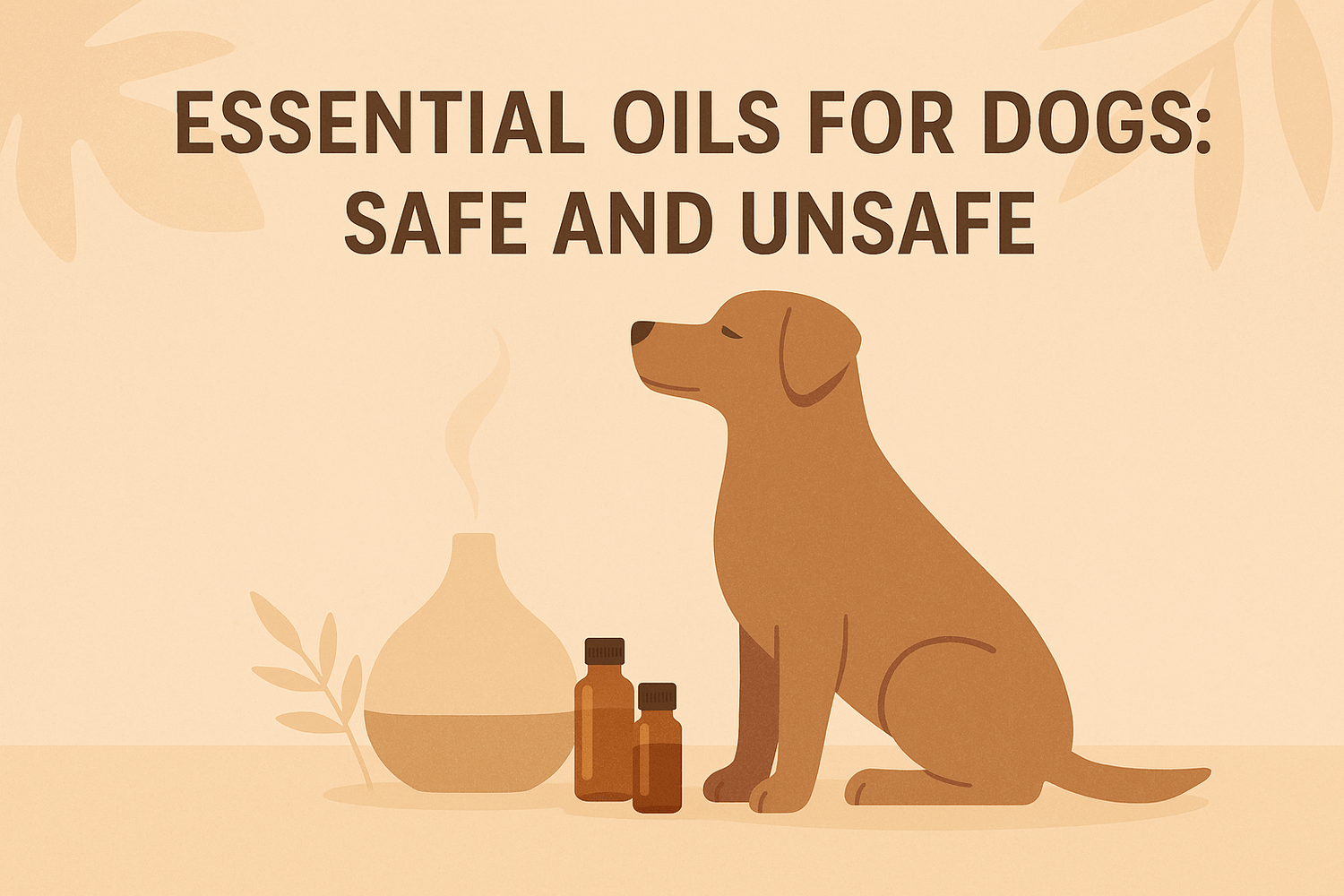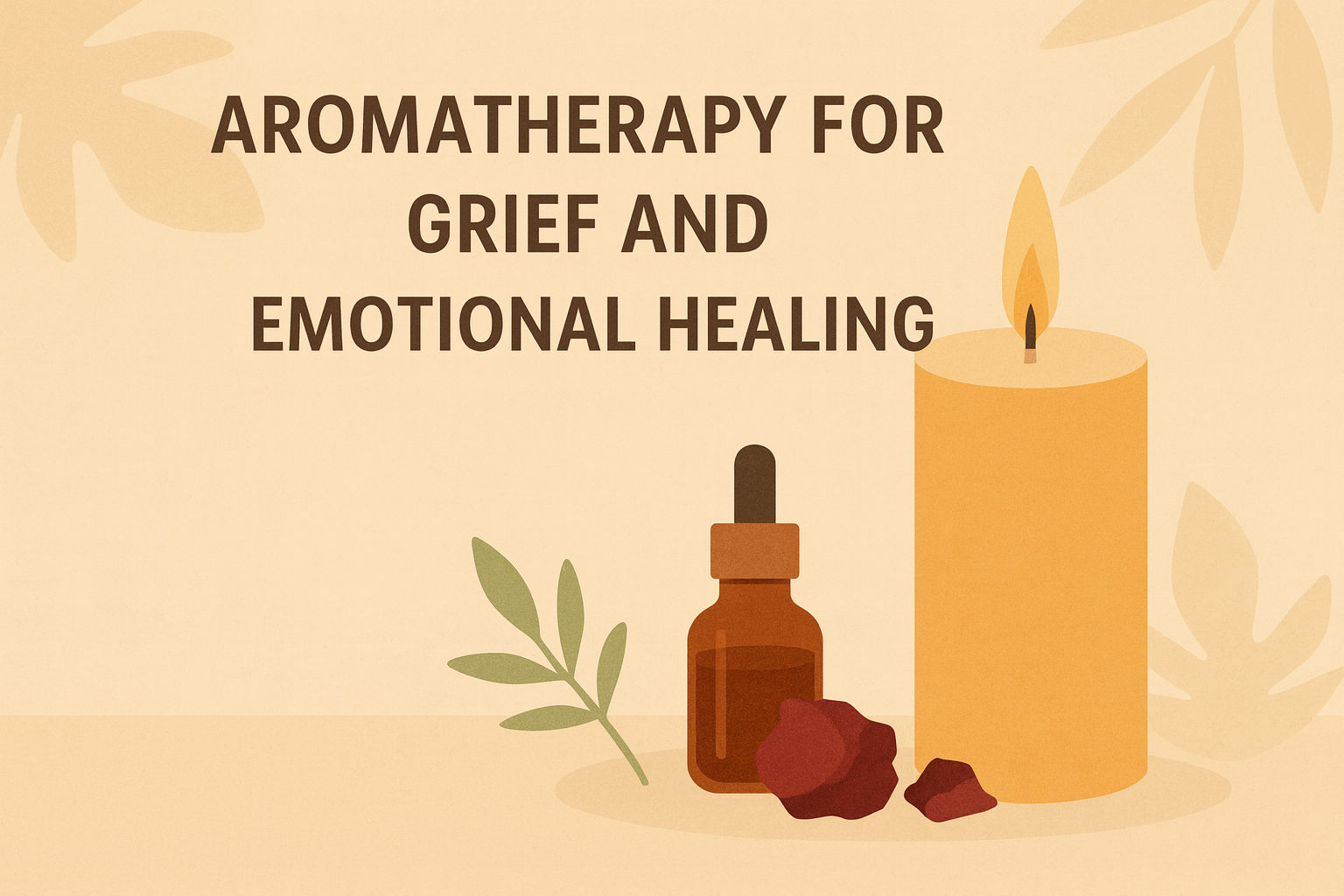For most of us, home feels incomplete without both — a warm candle and a wagging tail. But when you enjoy aromatherapy around pets, one question always comes up: are essential oils for dogs safe and unsafe depending on the type you use?
The answer is yes — it depends on the oil, the amount, and how it’s used. Dogs have a far stronger sense of smell and a very different metabolism from ours. What relaxes you may irritate your dog’s skin, nose, or even internal organs if used carelessly.
That doesn’t mean you must stop using essential oils. It just means learning which ones are safe, which to avoid, and how to use them correctly so that you and your dog can both enjoy a calm, aromatic home.
Why You Must Be Careful with Essential Oils and Dogs
Dogs have more than 300 million scent receptors — compared to about 6 million in humans. That means their noses are incredibly powerful but also incredibly sensitive. Even mild scents can feel intense to them.
When you diffuse or apply essential oils, these microscopic aromatic molecules enter your dog’s system through inhalation or skin contact. Some oils can soothe and comfort, while others can overwhelm their nervous system or stress their liver.
In short: essential oils can be beneficial only when used safely. Diffusing in moderation, using proper dilution, and giving your dog freedom to leave the room are non-negotiable rules.
Essential Oils That Are Safe for Dogs
Let’s look at the oils that are considered safe for dogs when diluted properly. These can support relaxation, skin health, and even mild bug resistance when used responsibly.
1. Lavender
Lavender essential oil is gentle, calming, and versatile. It helps restless dogs relax during thunderstorms, car rides, or fireworks. Try diffusing 2–3 drops in a large, well-ventilated room for 10 minutes, or blend one drop with a teaspoon of coconut oil for a light rub on the collar area.
2. Chamomile
Chamomile essential oil is famous for its soothing properties. It can calm itchy skin, reduce anxiety, and ease digestion when used in gentle diffusion. It’s especially great for nervous rescue dogs who take time to settle.
3. Frankincense
Frankincense supports healthy cells and boosts immunity. It can also help older dogs feel more grounded and relaxed. When diffused lightly, it creates a peaceful environment that benefits both pets and humans.
4. Geranium
Geranium essential oil has a sweet floral scent that helps balance emotions. Many natural flea and tick sprays for dogs include it because it repels insects without strong toxicity.
5. Cedarwood
Cedarwood essential oil is earthy and grounding, known for its ability to repel ticks, fleas, and mosquitoes. It can be blended into DIY coat sprays or shampoos.
6. Myrrh
Myrrh helps minor skin irritations and supports wound healing. It’s strong, so always use it in very low concentration (one drop per tablespoon of carrier oil).
Essential Oils That Are Unsafe for Dogs
Here’s where caution is crucial. Some essential oils can be toxic or harsh even in small doses. These should never be applied or diffused near dogs:
-
Tea Tree (Melaleuca) – A few drops can cause poisoning and tremors.
-
Cinnamon and Clove – Can damage the liver and irritate mucous membranes.
-
Citrus Oils (Lemon, Orange, Grapefruit) – May cause vomiting and photosensitivity.
-
Pine and Eucalyptus – Overstimulating to the lungs and airways.
-
Wintergreen and Birch – Contain salicylates, which can be fatal to pets.
-
Ylang Ylang and Peppermint – Too strong for dogs; may cause nausea or imbalance.
If your pet shows signs such as drooling, weakness, vomiting, or breathing trouble after contact with essential oils, contact your vet immediately.
Essential Oils That Help Repel Ticks and Fleas Naturally
One of the most practical uses of essential oils is in natural pest prevention. Instead of harsh chemical sprays, certain oils help repel fleas and ticks naturally.
1. Cedarwood
Cedarwood oil interferes with insects’ scent receptors, confusing them and preventing them from attaching to your dog’s fur.
2. Lemongrass
Lemongrass essential oil adds a crisp, lemony scent that mosquitoes and fleas dislike. It can be added to a light mist spray before walks.
3. Rosemary
Rosemary essential oil improves coat shine and acts as a natural repellent. Dogs often tolerate it well when diluted.
4. Lavender
Beyond calming benefits, lavender essential oil adds gentle flea resistance and keeps your pet’s bedding fresh.
These oils work best as complementary protection — they can reduce pest attraction, but they should not replace your vet’s prescribed tick or flea medication.
DIY Natural Flea and Tick Spray
Here’s a simple, effective, and vet-approved formula you can try:
Ingredients:
-
1 cup distilled water
-
2 tablespoons witch hazel
-
8 drops cedarwood essential oil
-
4 drops lemongrass essential oil
-
4 drops lavender essential oil
Instructions:
-
Add all ingredients into a glass spray bottle.
-
Shake well before each use.
-
Spray lightly over your dog’s coat, avoiding the face and sensitive areas.
-
Use before outdoor walks or playtime, and store in a cool place.
Tip: Always test a small patch before full use. If your dog licks or scratches excessively, discontinue immediately.
Safe Ways to Use Essential Oils Around Dogs
Here’s a quick safety checklist every pet parent should follow:
-
Dilute every time – 0.5–2% concentration is the safe range.
-
Never apply oils directly on the skin or fur.
-
Diffuse in open spaces with ventilation.
-
Avoid paws, eyes, nose, and genitals.
-
Give your dog an exit path when diffusing.
-
Watch for warning signs – sneezing, drooling, lethargy, or restlessness.
-
Avoid use on pregnant, nursing, or very young dogs.
-
Use only pure essential oils – no synthetic fragrances or blends with alcohol.
-
Consult your vet before using any new oil or blend.
Used correctly, essential oils can create a serene environment that supports both your and your pet’s emotional balance.
Creating a Pet-Friendly Aromatherapy Routine
If you love diffusing oils at home, your dog can still be part of that calming experience. Try setting up a diffuser in a large room for short sessions — about 10–15 minutes at a time. Avoid spicy, citrusy, or overly sweet oils.
Keep your pet’s comfort first. If they walk away or act restless, turn off the diffuser and air out the space.
At BlendToGlow, we create 100% natural aromatherapy products designed for mindful living. Our blends are crafted without parabens, synthetic fragrances, or harmful additives — so you can enjoy purity and peace of mind at home.
Explore some of our wellness favorites:
-
Citrus Burst Diffuser Blend — Brightens your space and energy.
-
Temple Aura Candle — Perfect for evening meditation and calm.
-
Happy Vibes Car Aroma — Uplifts your mood during daily drives.
While these products are crafted for humans, their natural ingredients make them safer choices in homes shared with pets.
When to Contact a Veterinarian
If you suspect your dog has inhaled or ingested essential oil, don’t wait for symptoms to worsen. Call your vet or an emergency clinic right away. Bring the essential oil bottle with you so they can identify the exact compound.
Early care can prevent liver damage or respiratory complications. It’s always better to err on the side of caution.
The Bottom Line
Knowing which essential oils for dogs are safe and unsafe helps you protect your furry family while still enjoying the beauty of aromatherapy.
Stick with gentle options like lavender, chamomile, cedarwood, and frankincense, and stay far away from tea tree, wintergreen, citrus, and clove oils.
Essential oils can be wonderful tools for relaxation, cleanliness, and even mild pest control — as long as they’re used with knowledge and care.
A well-chosen blend can make your home smell divine, your mind calm, and your pet safe. That’s what holistic living with BlendToGlow is all about.


